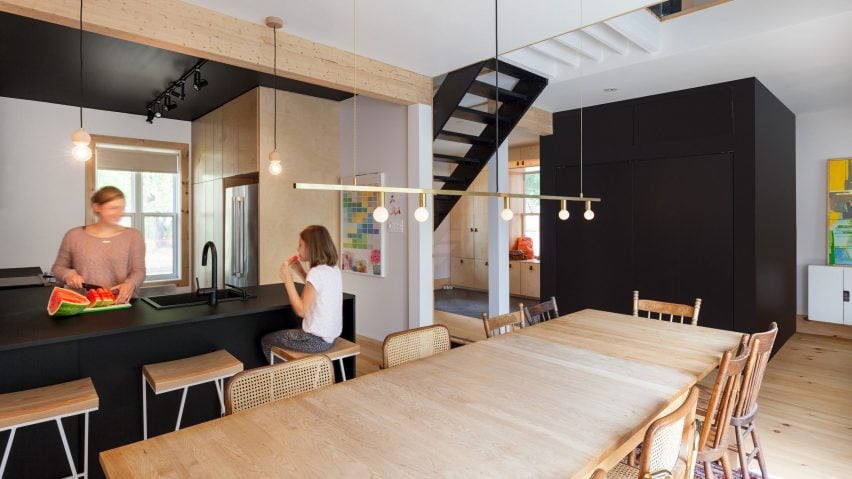
Mélissa Ohnona preserves nicks and scratches during revamp of century-old Montreal home
Canadian designer Mélissa Ohnona has fully overhauled her own house, preserving imperfections to maintain charm and keep the interior from "feeling intimidating".
Located in the Montreal suburb of Laval, the Lévesque Project entailed a full interior renovation of a historic dwelling that is owned and occupied by the designer and her family.
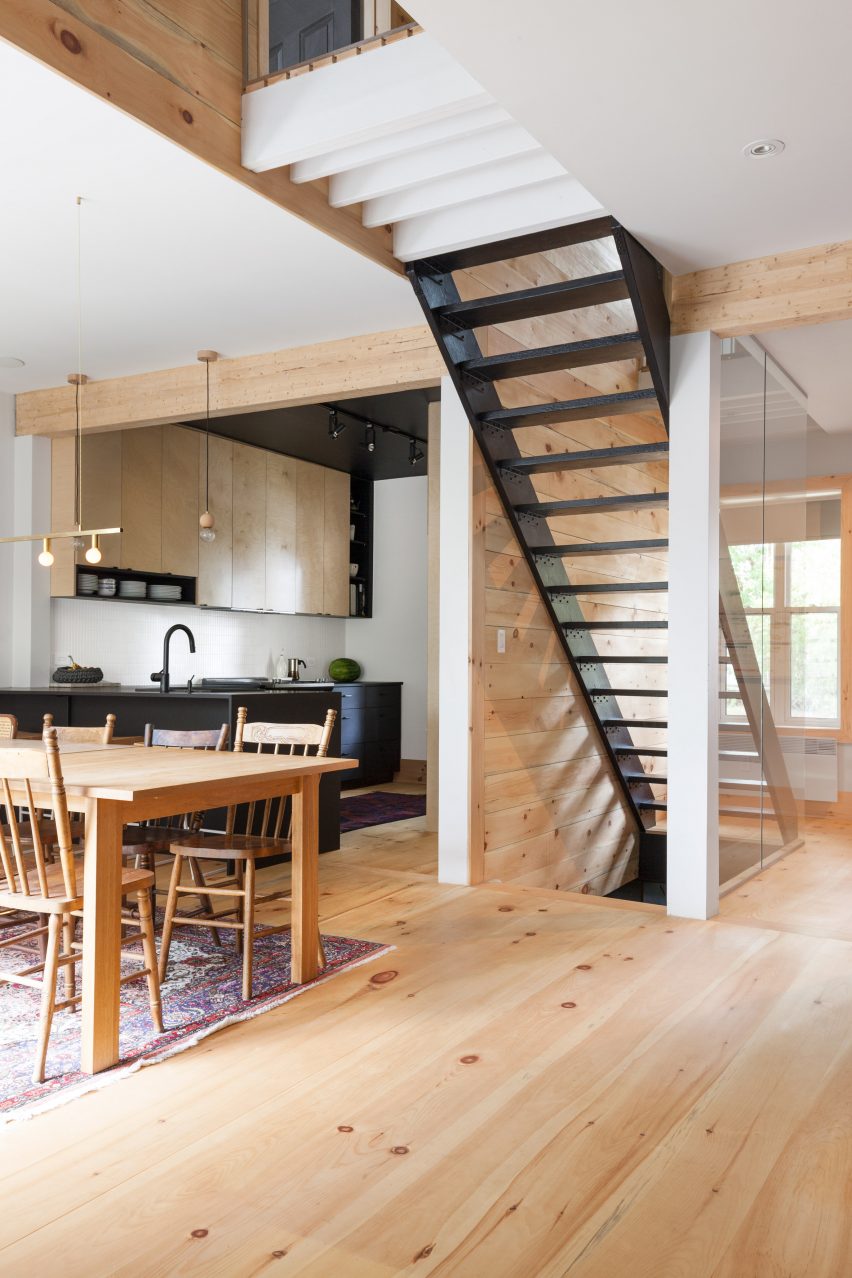
To create a "welcoming and functional family home", the designer sought to maximise the space, along with increasing natural light and outward views. The home encompasses 1,500 square feet (139 square metres).
"The space had been renovated in the 1990s, leaving it oddly divided and devoid of any original charm," said Mélissa Ohnona, who runs an interior design studio in Quebec.
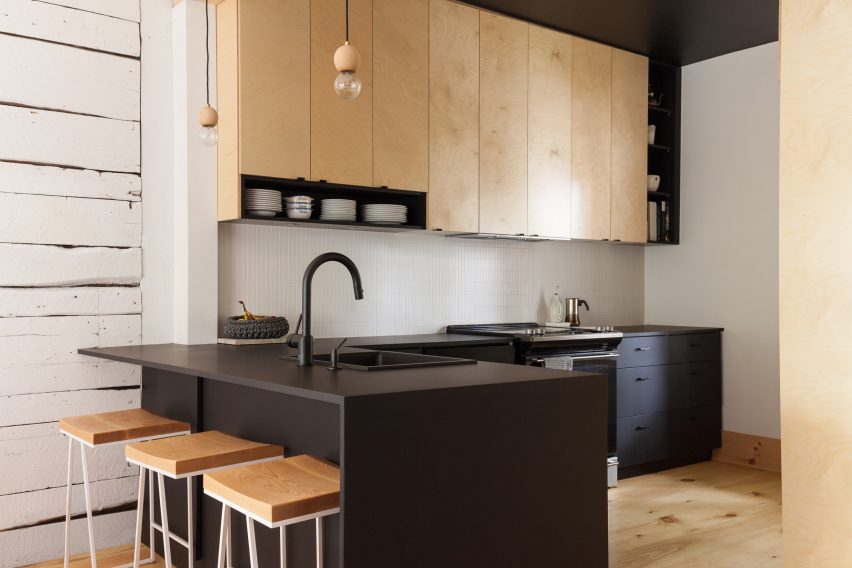
"Therefore, it was decided we would start from scratch and completely rethink the layout."
The scheme entailed relocating the kitchen, living room and stairs, along with moving a bathroom and powder room. An extension was added to the second floor, which made way for extra bedrooms to accommodate the couple's three daughters.
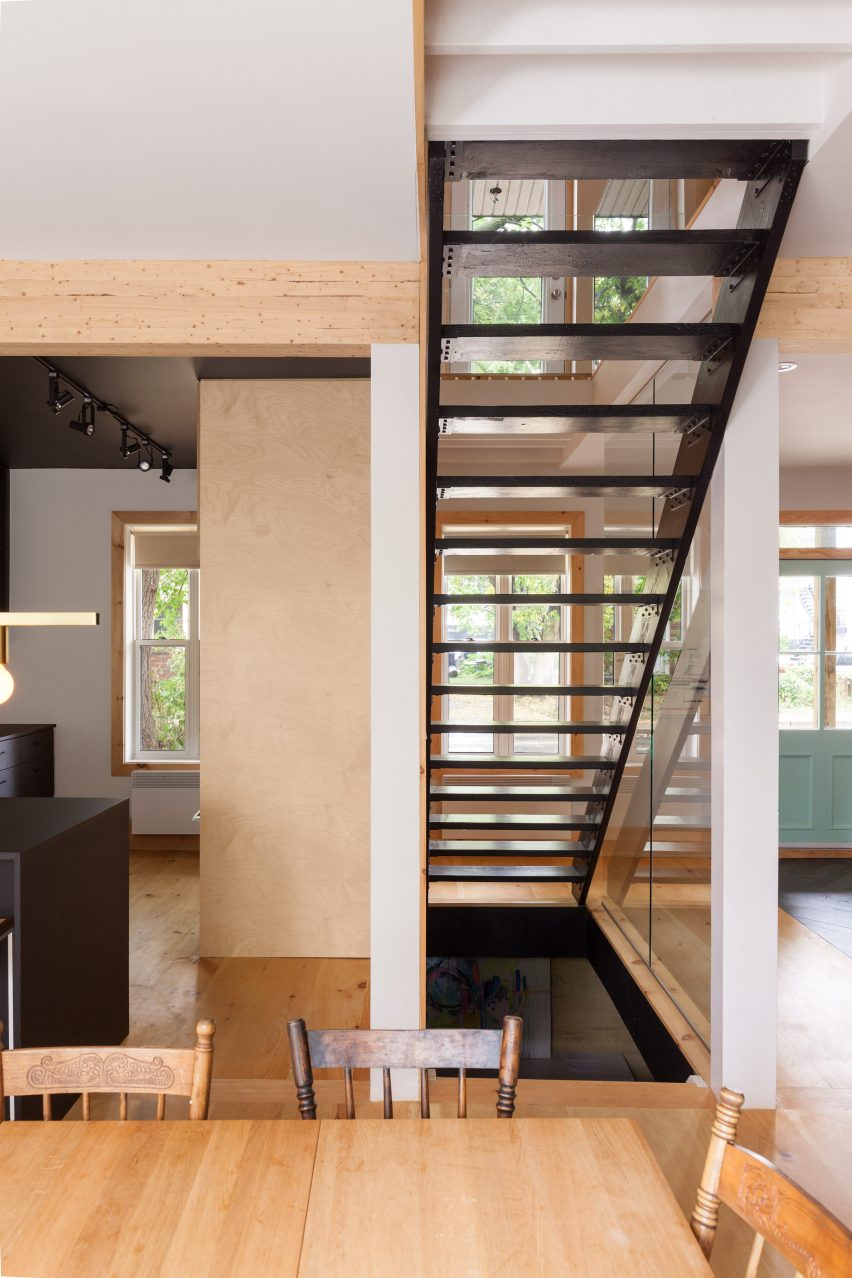
Due to a limited budget, the couple did much of the work themselves. The designer's husband, Hubert – a self-taught handyman – built the stairs, painted the rooms, and installed the floors, mouldings, wall panels and doors.
Nicks and scratches were preserved, as the designer sees them "as traces of the actual living that takes place".
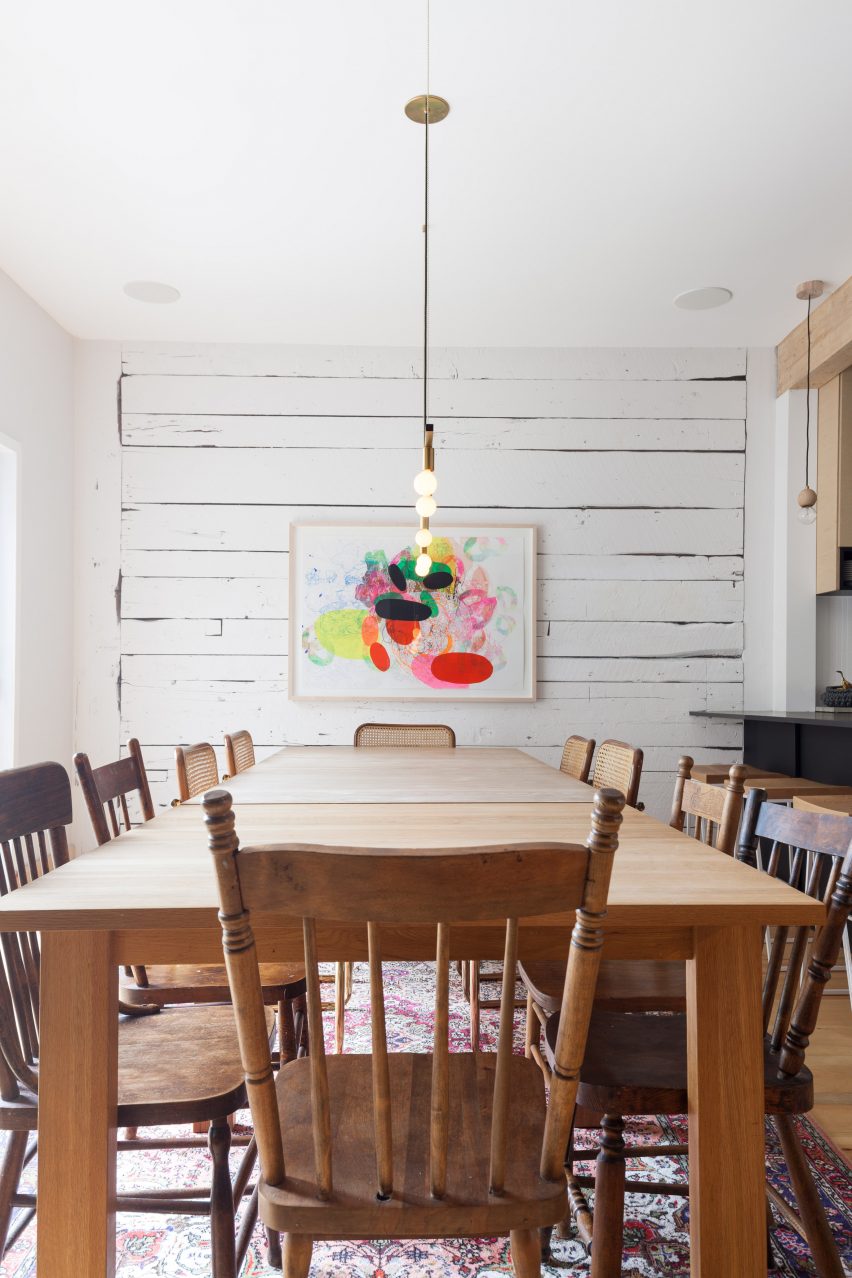
"We did not try to hide the imperfections because we see them as a welcoming factor, keeping the house from feeling intimidating," the designer said.
For the ground floor, the designer aimed to strike a balance between openness and defined spaces.
The entry sequence begins with a black volume concealing a powder room and laundry, intended to maintain "a bit of mystery and insure the house does not reveal itself completely at first glance".
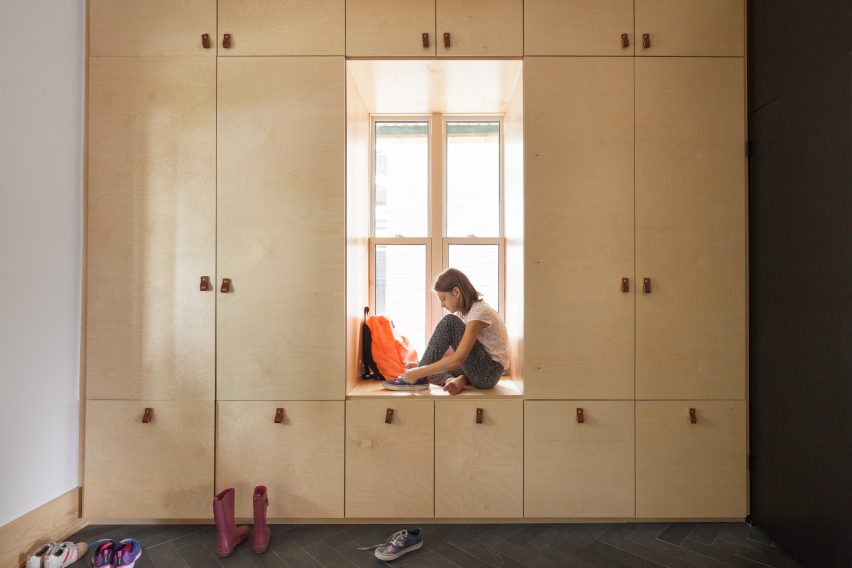
Visitors then pass into the living and dining areas, which look out toward a tree-filled backyard. The living room formerly was located in the front of the home.
The kitchen, while tucked into a nook, is open to the living area. The enlarged dining room now holds a table that seats 14 people – a key concern for the designer, who wanted a space that could host large gatherings.
Because of a sloped site, the ground floor rises up as one moves toward the back of the home. "The ground floor is on street level at the front of the building, but one floor up at the rear," Ohnona said. "Therefore, when looking out from the wide openings at the back, you are up in the trees."
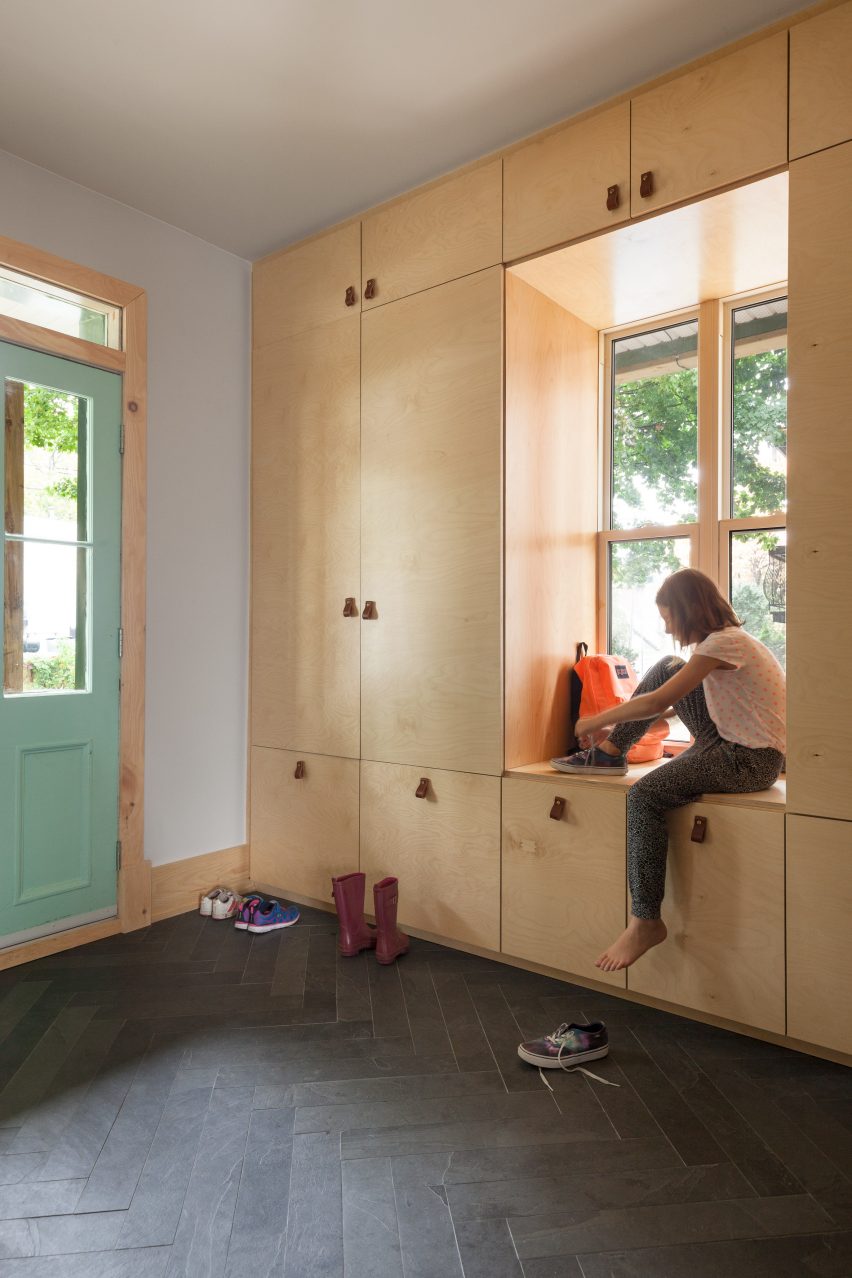
On the second storey, the team installed a central rift that divides the floor in half.
Two small "bridges" traverse the gap and enable access from the hallway to the bedrooms. "This creates interesting views onto the living area downstairs," the designer said.
A staircase was moved to the centre of the home and features knotted pine walls and glass railings.
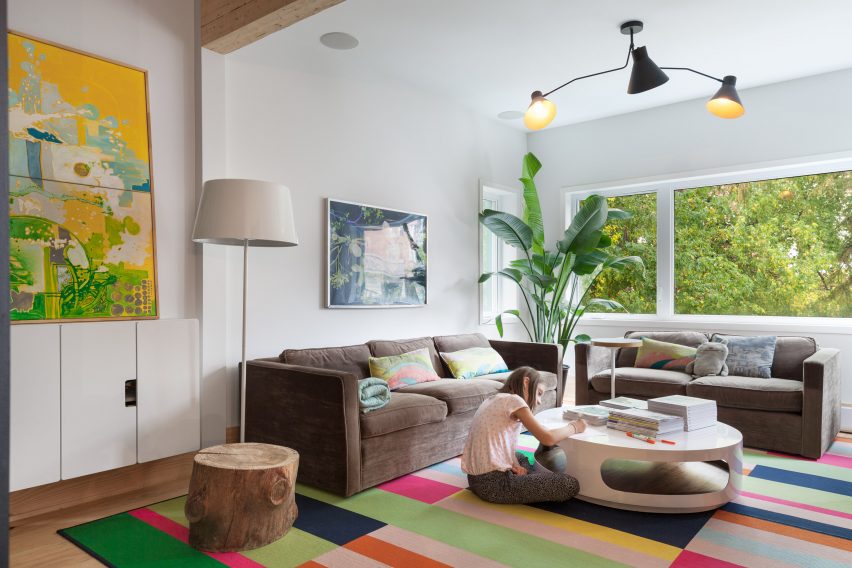
A fairly restrained colour palette was employed in the home, with most rooms dominated by white, black and pale-coloured wood. "The black elements contrast beautifully with the wood, but are not overpowering, as the white walls let the light bounce and flood the house," the designer said.
Vibrant art and patterned rugs were incorporated into several rooms.
The designer focused on creating a pleasing mix of textures. Finishes and accents include slate tile, leather pulls, glass railings and ultra-matte kitchen cabinetry.
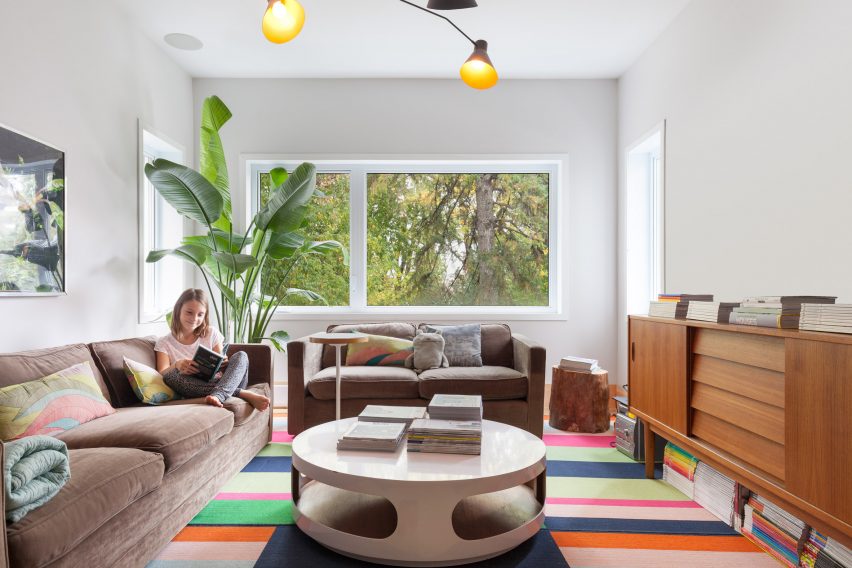
Wide planks of oiled white pine were used for flooring.
"The pine is a material that could have been used a hundred years ago, and is therefore coherent with the age of the house," said Ohnona. "It is a soft wood, which means it will develop an interesting patina over the years."
Other projects in Montreal include the transformation of a 1930s brick building into a contemporary home by Naturehumaine and the revamp of a 125-year-old urban dwelling by Architecture Open Form, which involved creating a black wooden facade.